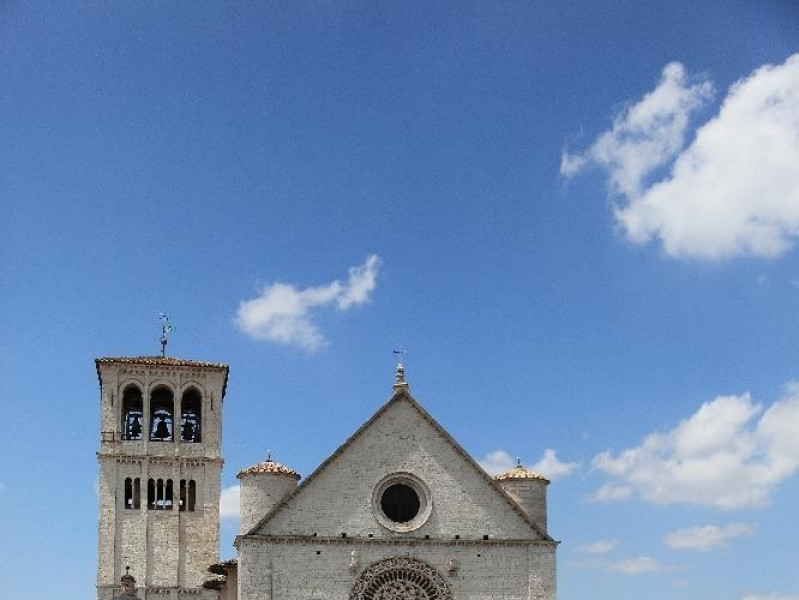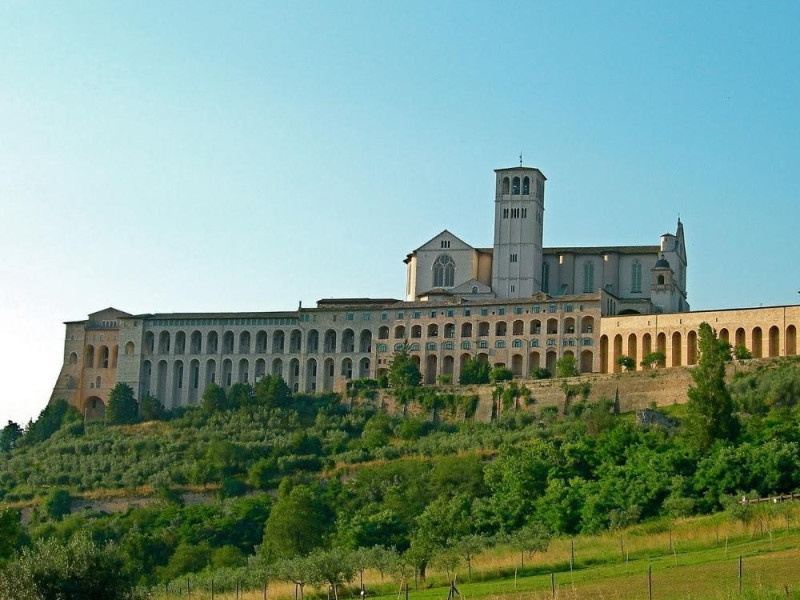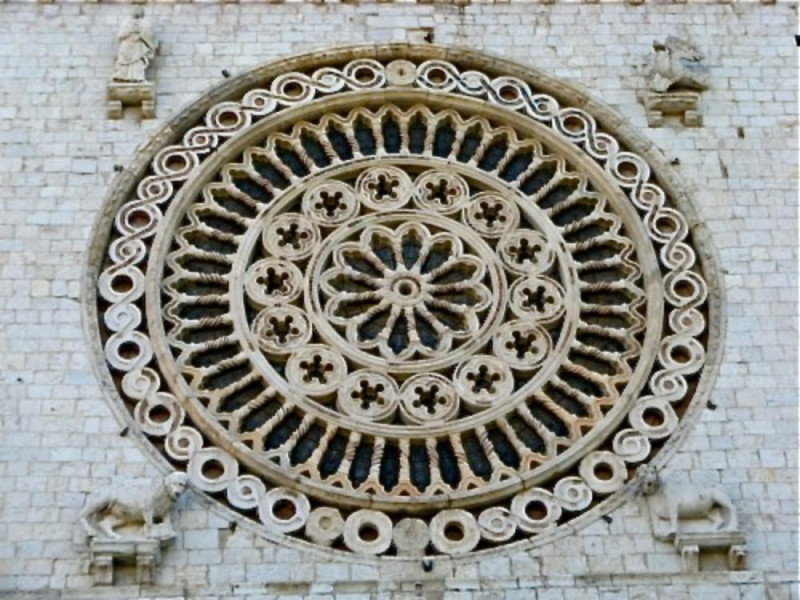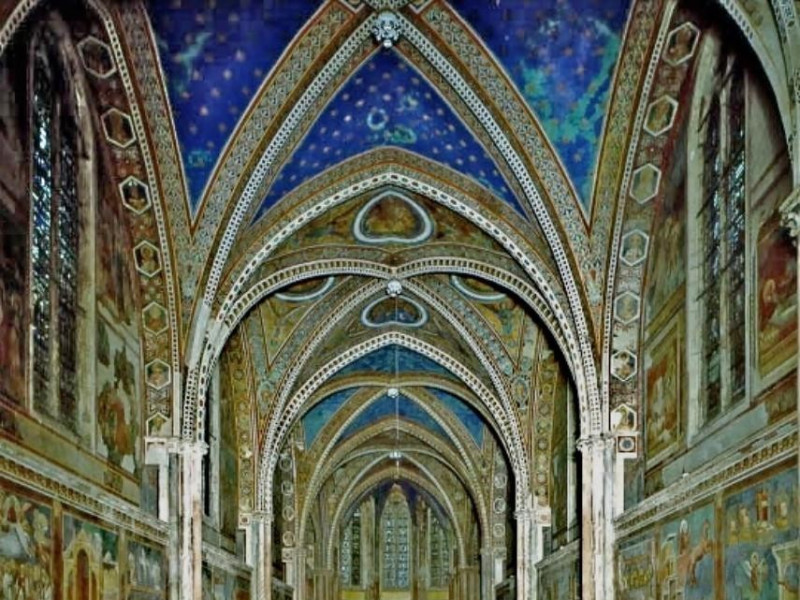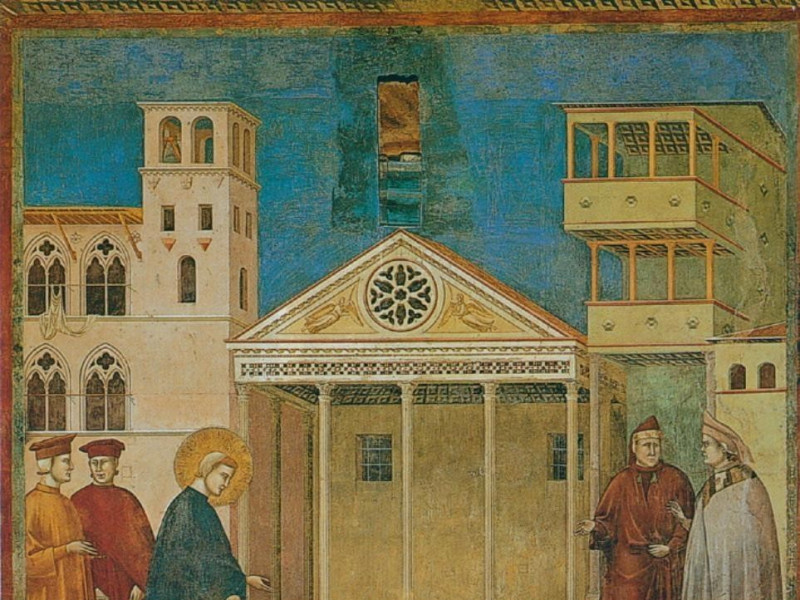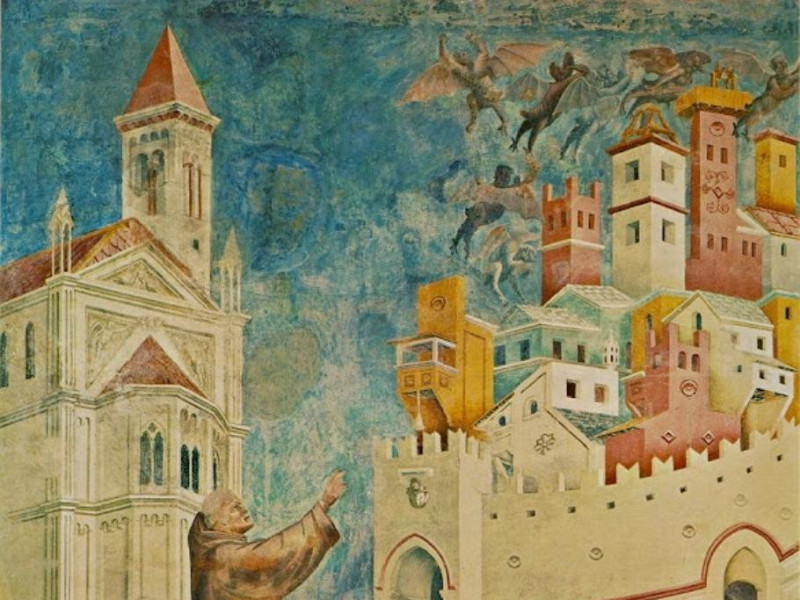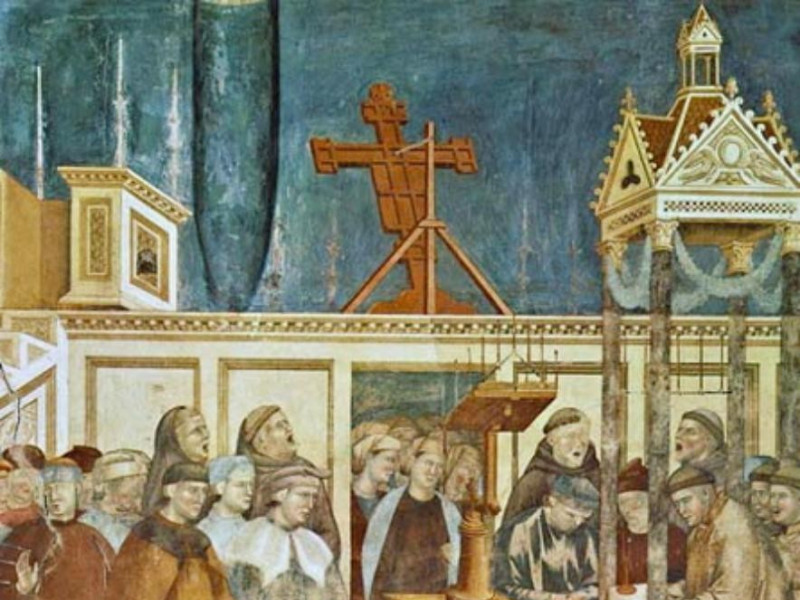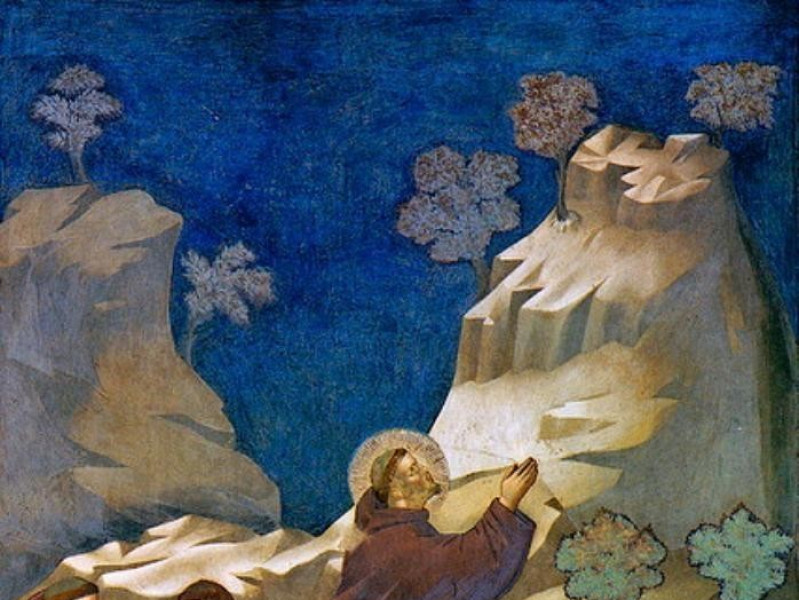Basilica di San Francesco (Sito UNESCO)
After the death of St Francis in 1226 and following his canonization, Pope Gregory IX laid down a foundation stone on the land where a “specialis ecclesia”—a special church—would be raised. Dedicated to St Francis, the Basilica of San Francesco was consecrated in 1253 by Pope Innocent IV. There are two bodies of construction—the lower church “inferiore” and the upper church “superiore”—built one on top of the other. The two churches correspond respectively to two different construction phases, in which elements of the Umbrian Romanesque and a language influenced by the French Gothic collimate. Its construction was initiated in July 1228 and terminated in 1230, when the body of the Saint was translated there. The double church plan emphasizes the dual function it had to accomplish, the lower church was destined to be the crypt and the upper church was destined to be the monastic lecture hall for preaching. The two churches decorative apparatus represents the most important painting complex of art from the 13th and 14th centuries, in fact, among the eminences of the Italian artists of this period who worked on it there are names such as Cimabue, Giotto, Simone Martini, Pietro Lorenzetti, Jacopo Torriti and others. The façade of the upper church, the Basilica superiore of San Francesco, is characterized by its simple lines, and is crowned by a triangular tympanum, in line with the local Gothic taste of the time. The portal is geminated, and at the center of the median portion of the façade there is a Cosmatesque rose window alongside relief sculptures, symbols of the Four Evangelists. On the left side there is a Blessing Tower with its Loggia, which was built in 1607. For the lower church, the Basilica inferiore: the access is through a Portal built around the second half of the 1200s; while the interior has an Egyptian cross shaped floor plan with a semicircular apse and a short barrel-vaulted transept. The nave, formed by four bays of surbased-cross vaults—i.e. vaults with a diminished arch rise—is simple. On the lateral sides of each bay, pointed arches open the way to the lateral chapels on their longer sides towards the transept. Frescoes from the Master of St. Francis: executed in 1253 approx. and of remarkable iconographic interest, are ascribed to the Master of St. Francis, an anonymous painter of Umbrian origins influenced by the personality of Giunta da Pisano. To the right, Stories of the life of Christ: The Preparation of the Cross, The Crucifixion, Descending from the Cross, The Deposition, Lamentations over the Dead Christ, Appearance of Christ in Emmaus, Madonna with Child and Angel. To the left, Stories of the life of St Francis: Renunciation of his Worldly Goods, Innocent III in a dream sees St Francis holding the Lateran, The Saint Preaching to the Birds, Receiving the Stigmata, The Death of the Saint. The lateral Chapels, to the right: I. Chapel of SS Louis of Toulouse and Stephen: with frescoes by the painters Dono Doni and Giorgetti and a quadrifora—a four lancet stained glass window—work of Giovanni di Bonino and a co-worker. In the passageway towards the next chapel—dedicated to St Lawrence—there are frescoes of the late 14th century; II. Chapel of St Anthony of Padua: with frescoes by Cesare Sermei and a quadrifora, a joint work of some masters, followers of Giotto, and of Giovanni di Bonino; III. Chapel of Mary Magdalene: on the right, frescoes executed by Giotto and his collaborators. In the presbytery, the main altar stone is a work of Roman marblers. In the four walls of the ribbed cross vaults the frescoes depicting the Allegories of the Franciscan Virtues and The Glory of St Francis can be dated within the first twenty years of the 1300s. The right arm of the cross-vault is divided into two fresco decoration stripes painted by Giotto’s collaborators under his direction; in the first frieze to the right there is a Cimabue work, Enthroned Madonna with Child, four Angels and St Francis and other frescoes; in the second frieze to the right there is the Crucifixion, a work of Giotto, and other frescoes. St Nicholas Chapel: with Giotto’s disciples’ frescoes. The left arm of the cross-vault is entirely decorated with frescoes executed between 1315 and 1320 by Pietro Lorenzetti and his helpers: St Francis Receiving the Stigmata, The Capture of Christ, The Last Supper, The Flagellation, The Hanging of Judas, The Washing of the Feet, Entrance in Jerusalem and The Road to Suffering. On the left side, there is the Crucifixion, and below, to the right, The Madonna with Child and SS Francis and Johan the Baptist. St Johan the Baptist Chapel: with a fresco of Pietro Lorenzetti depicting a Madonna with Child and SS Francis and Johan the Baptist, with Romanesque and Cimabue influences, and a bifora—a double lancet window. Above the tribune, inside the niche, there is The Crowning of Maria and on the side The Miracle of St Stanislaus and Martyrdom of the Saint ascribed to Puccio Capanna. St Martin Chapel was entirely fresco-decorated by Simone Martini, between 1312 and 1320. On the archivolt of the arch at the entrance there are various Saints, and in the rest of the chapel The Stories of the life of St Martin are depicted. In the superior church, the Basilica superiore, there is a single four-bay nave, a transept and a polygonal apse, entirely covered by a cross-ogival vaulted ceiling supported by costoloni—ribbed arches—discharging in bundled pillars. The luminosity, inside, is conferred by the presence of bifore and quadrifore—i.e. a series of big double lancet and four lancet windows—both in the nave and in the apse. The architectural solutions adopted come from the Gothic—from the north of the Alps—which finds its faithful application in this church even while maintaining characteristics of the Italian tradition. The transept and the apse are entirely decorated with a vast cycle of frescoes executed, starting from 1277, by Cimabue. In the left arm of the cross vault, the Crucifixion is followed by five apocalyptic scenes. The frescoes of the apse depict the Stories of the life of the Virgin Mary. On the right arm of the cross vault the Facts of the Life of St Peter are depicted, a work executed by Cimabue’s closest masters. The frescoes of the cross vault in which The Four Evangelists are depicted are also ascribed to Cimabue. On the vault, at the height of the 3rd bay, there are some frescoes executed by Jacopo Torriti; at the height of the 1st bay there are The Four Doctors of the Church, ascribable to several masters, among whom the Master of Isaac and the Master of the Capture. On the upper walls all along the nave and at the sides of the windows, the frescoes depict the Stories of the Old Testament and the New Testament, ascribed to Jacopo Torriti, to the Master of the Pentecost, to the Master of the Capture and to the Master of Isaac. Set in the lower part of the wall of the nave, between the architectural structures of the bays, regrouped in three scenes each partitioned by fake spiral columns, and united by a fake mantelpiece and a ceiling in lacunars, there are the 28 scenes depicting the Stories of the life of St Francis of Giotto and other painters, such as the Master of Isaac, the Master of the Capture, the Master of the Crucifix of Montefalco and the Master of St Cecilia. The cycle is inspired by the Life—Legenda Maior—of Bonaventure from Bagnoregio.
